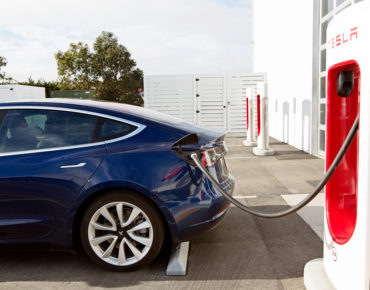Musk Finds Car Making Harder Than Rocket Science

Aleksei Potov/Shutterstock
An enterprise, our turf, is defined by Mr. Webster as “an undertaking, [especially] one of great scope, complication, or risk.” Add layers of technology, and the goal of the enterprise becomes that much more complicated and risky.
Few enterprises have embraced these challenges more than Elon Musk’s drive to transform auto manufacturing: Tesla. As a remarkable story in the New York Times describes, Musk is having a heck of a time producing the mass-market version of his electric car, the Tesla Model 3. The newspaper reports on a third Model 3 assembly line hastily assembled in a long tent outside Tesla manufacturing headquarters in Fremont, Calif.
The tent factory embodies the fits and starts Tesla has endured, and the rethinking of its heavy reliance on robotic manufacturing. With Model 3 production falling steadily behind projections, the Times article reports that Musk and his managers have come to the realization that humans rather than expensive machines are better suited to some assembly line tasks (for Musk's distopic views on AI, please go to this story posted a year ago).
For example, Tesla had major problems training robots to bolt car seats to the Model 3 chassis. It is reportedly hiring 400 workers a week to handle such assembly line tasks as it looks for any way to accelerate production.
The fact that Tesla is replacing expensive robotics gear with humans is itself surprising. The Model 3 story also notes that Tesla managers have reprogrammed robots to reduce the number of chassis welds used in manufacturing the Model 3. All this is designed to speed up the line and push more Model 3s out the door and into the driveways of a long list of frustrated customers.
According to Tesla’s forum page, customers who put down a $1,000 deposit to reserve a Model 3 (and reportedly another $2,500 to “confirm” their order) are facing delivery times extending as far as two years. A friend who placed his order for a Model 3 early last year was contacted by Tesla last week to make his “configuration” selections.
That along with other reports that Tesla is allowing reservation holders to option packages and colors indicates that the makeshift third production line with humans replacing robots for some tasks is finally bearing fruit. Or as Elon Musk told the Times: “If conventional thinking makes your mission impossible, then unconventional thinking is necessary.”
(The Times reporter noted that his interview with Musk was conducted at 3 a.m.)
Musk has successfully applied automation tools like 3-D modeling and computation fluid dynamics to reduce the cost of building reusable rockets. It turns out that applying these tools to high-volume auto manufacturing is surprisingly difficult, especially when you are striving the transform the way vehicles are made and sold.
Who would have guessed car making would turn out to be harder than rocket science?
One measure of success in any technology enterprise is doing precisely what you said you would do. In many instances, particularly his transformational rocket company SpaceX, Musk has done just that. On Monday (July 2), Tesla disclosed that it had met its weekly production goal of 5,000 Model 3s during the last week of June.
“The high number of customer vehicles in transit for Model 3 was primarily due to a significant increase in production towards the end of the quarter,” the car maker said.
The tent factory appears to have made the difference.
Whether Tesla is able to sustain its manufacturing goal (and break-even point) of 20,000 Model 3s per month remains to be seen. Tesla’s future as an enterprise depends on it.
Related
George Leopold has written about science and technology for more than 30 years, focusing on electronics and aerospace technology. He previously served as executive editor of Electronic Engineering Times. Leopold is the author of "Calculated Risk: The Supersonic Life and Times of Gus Grissom" (Purdue University Press, 2016).










